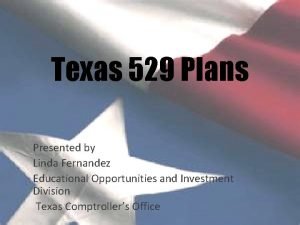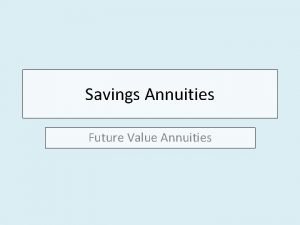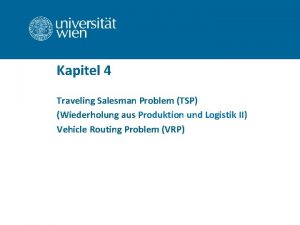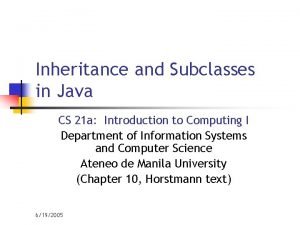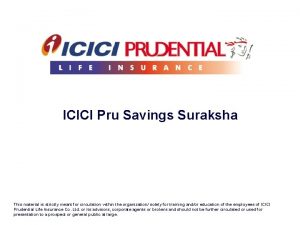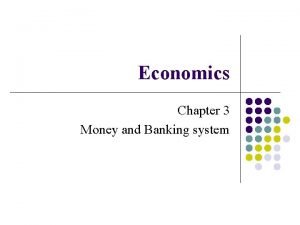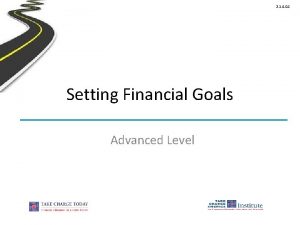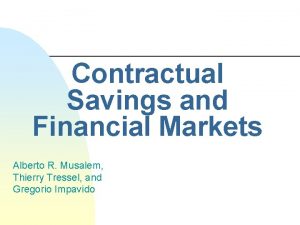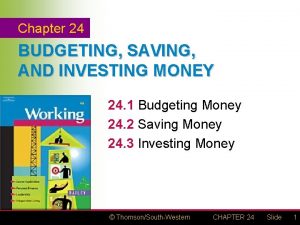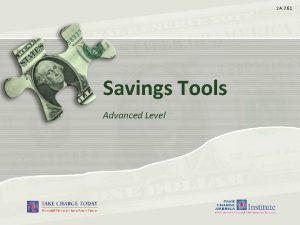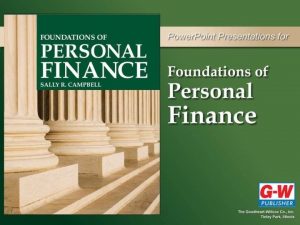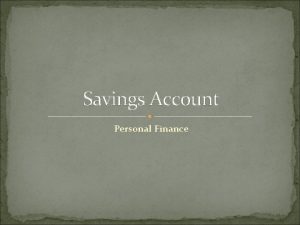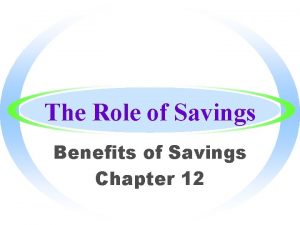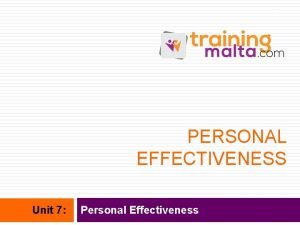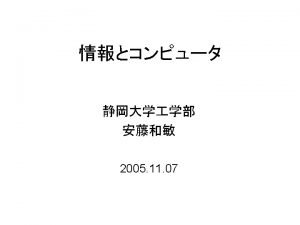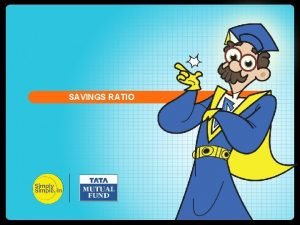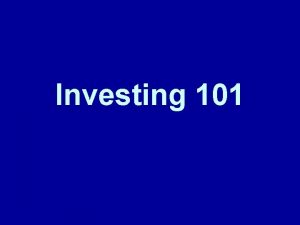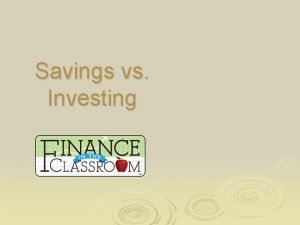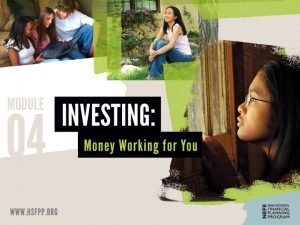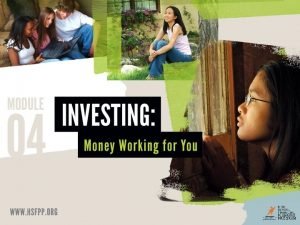Chapter 2 Savings Unit 1 Introduction to Personal






















- Slides: 22

Chapter 2: Savings Unit 1: Introduction to Personal Finance

Explore Examine the charts, graphics, and reading excerpts in Chapter 2: Savings. o Make a list of questions you would like to have answered as we go through the chapter.

Introduction WB: Before You Begin, pgs. 30 -31 o Review the Learning Outcome objectives and Key Terms o Complete the “Before” column on the “Measure Your Progress” chart Journal: 1. What are your initial thoughts about saving? 2. What do you want to learn about saving?

Saving: An Exercise in Character Section 1

The Five Foundations Video (15 minutes): The Five Foundations Journal: 1. What has kept you from saving in the past? 2. Based on what you’ve learned, how can you change this? Reading: o Are Americans Good Savers? (p. 33) o How Can I Save $500 Quickly? (p. 35)

Discussion Questions What is the purpose of the Five Foundations? o These steps serve as a compass or framework for financial success. What does it mean to have a negative savings rate? o On average, people are spending more than they are making. Why do you think Americans, in general, are not good savers?

Discussion Questions How can having an emergency fund help you to protect and grow your wealth? o If you have an emergency fund, you will be able to weather those big unexpected expenses without throwing your finances off track. Look at the list of 10 ways teens can come up with $500 quickly. Which of those ideas might or have worked for you?

Five Foundations of Personal Finance Activity: o Saving By Nation (25 Minutes) Homework: Create a mini poster of the Five Foundations o Picture representation of each of the Five Foundations o Label for each drawing o Brief description of how you plan to follow through with each step.

Activity Group Project: In groups of three, develop a multimedia presentation of the five foundations, meeting these criteria: o In depth description of the Five Foundations 1. What is the purpose of each foundation? 2. Why is each foundation important? 3. How will each foundation impact your financial success? o Each person in the group must be present in the video/audio.

Three Basic Reasons to Save Money Section 2

The Five Foundations Video 2. 1 (9 minutes): Save Money for Three Basic Reasons Journal: 1. Explain how having an emergency fund helps protect your wealth.

Discussion Questions What are three basic reasons to save money? o Emergency fund, large purchases, wealth building. Is saving a few bucks a month worthwhile? Explain.

Purchases Video 2. 2 (11 minutes): Purchases Journal: 1. Why do you think so many people borrow money for large purchases instead of using a sinking fund? Read: Ready to start saving? (p. 38)

Discussion Questions When can you begin building wealth? o Hold off on investing until you have a fully funded emergency fund and your education is completely paid off. What is the key ingredient when it comes to building wealth? o Discipline

Activity Activity: Sinking Fund Savings

Wealth Building Video 2. 3 (7 minutes): Wealth Building Journal: 1. How is saving an exercise of your character?

The Power of Compound Interest Section 3

What is Interest? Video 3. 1 (13 minutes): What is Interest? Read: o What is interest? (p. 41) o How to calculate compound interest (p. 41) o Compound interest (p. 42) Journal: 1. Why don’t more people save for the future? 2. Which reasons can be fixed by having a money plan?

Discussion Questions What is compound interest? o It is interest paid on interest previously earned. How can compound interest help you grow wealth? o As time passes, the amount you earn from interest grows. It allows your money to earn more money. What excites you the most about investing?

Discussion Questions Define inflation: o The persistent rise in the price of goods and services over a period of time. Explain the time value of money. o A certain amount of money today has different buying power than the same amount of money in the future due to both the opportunity to earn interest on the money and because inflation will drive prices up. Can you think of anything that has significantly increased in price during your lifetime? o Gas, groceries, etc.

Activity Activity: o Saving: A Way to Build Wealth (20 Minutes) o Rate of Return (20 Minutes)

Chapter Summary Take Action Challenge, pg. 44 Budget Builder – foundations. U. com/2 Complete the “After” column on the “Measure Your Progress” chart, pg. 31. Money in Review, pgs. 46 -47
 Chapter 5 savings accounts
Chapter 5 savings accounts Chapter 30 savings accounts
Chapter 30 savings accounts Foundations in personal finance chapter 1 review
Foundations in personal finance chapter 1 review Unit 6 review questions
Unit 6 review questions Geothermal cost savings
Geothermal cost savings Texas college savings plan
Texas college savings plan Future value of annuity formula
Future value of annuity formula Savings verfahren
Savings verfahren Savings account java
Savings account java Icici pru savings suraksha
Icici pru savings suraksha Retirement savings percentile
Retirement savings percentile Demand deposit vs savings deposit
Demand deposit vs savings deposit Bright directions college savings
Bright directions college savings A measurable savings goal spells out ________.
A measurable savings goal spells out ________. Interior savings million dollar bursary
Interior savings million dollar bursary Janssen carepath savings program
Janssen carepath savings program Contractual savings institutions definition
Contractual savings institutions definition Budgeting and savings
Budgeting and savings Icici pru savings suraksha
Icici pru savings suraksha Savings tools definition
Savings tools definition 2-3 savings accounts answers
2-3 savings accounts answers Dreamahead vs get
Dreamahead vs get 529 plan montana
529 plan montana





